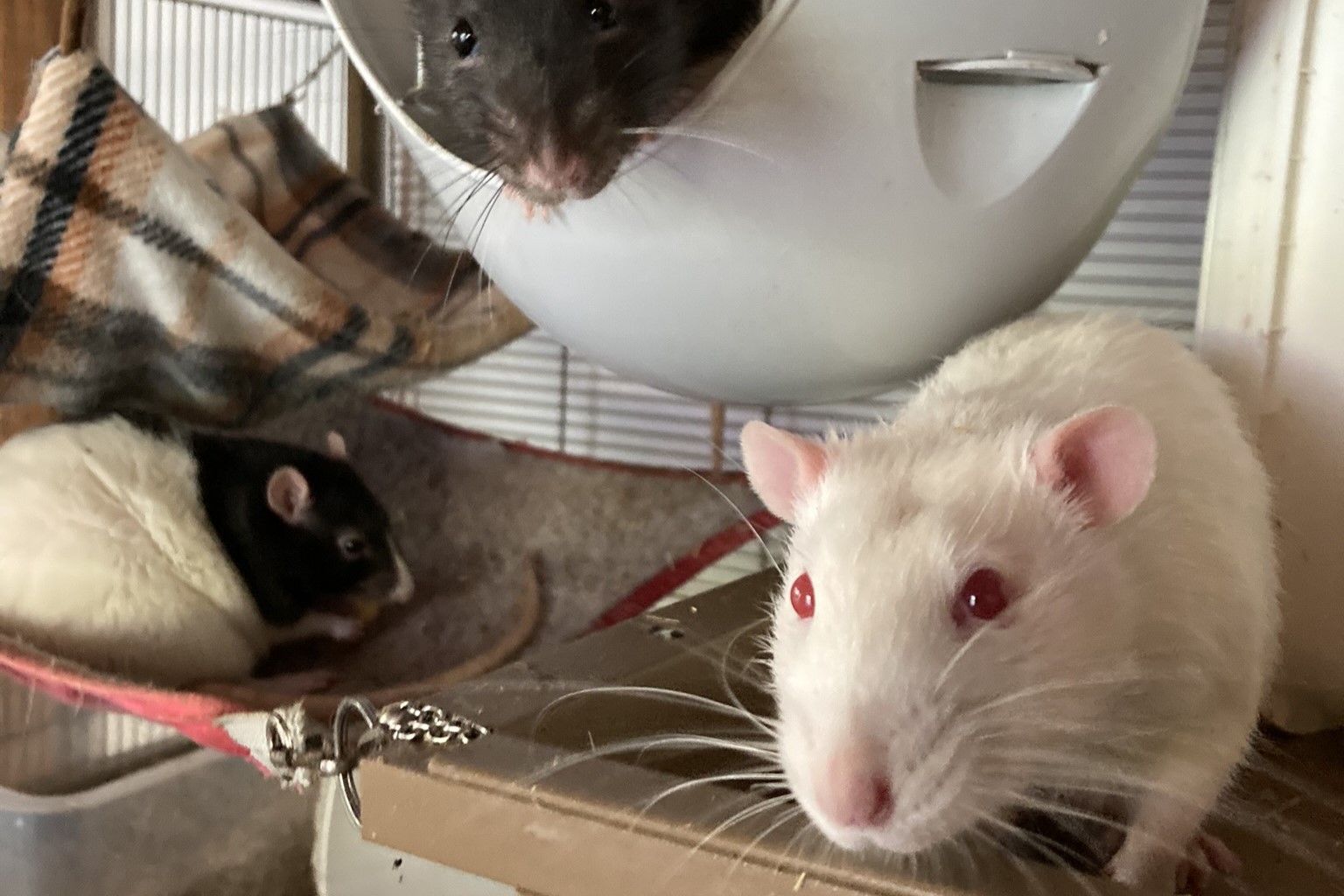World Laboratory Animal Day: make an ex-lab rat happy
1 year agoToday is World Laboratory Animal Day. Globally, this day calls attention to the use of laboratory animals.
Want to do something yourself? Then consider adopting an ex-lab rat through the Animal Welfare Body. They are very smart and social little animals that you can have a lot of fun with.
The Animal Welfare Body Utrecht supervises the use of laboratory animals within Utrecht University and the UMC Utrecht. The AWB supervises licence applications, monitors the welfare of the laboratory animals and works to reduce the number of laboratory animals in research and education. An adoption programme for lab rats has been in place for more than three years. "Larger animals, like dogs and horses, were adopted before, but nothing existed at that time for the smaller ones, like rats," says head of the Animal Welfare Body Pascalle van Loo. "That's why we set up an adoption programme several years ago, in collaboration with Animal Rights and the Animal Protection Society."
Watching TV together
The programme is now running very well. More and more small rodents are being rehomed. The animals, which are all well-socialised and healthy, are regularly given new homes with families with children. Elze Strasky is an AWB employee and has been involved in the adoption of ex-labrats since the very beginning. She has five herself, and is enthusiastic about the little animals. "The first thing my six- and eight-year-old daughters do when they get out of school is open the cage, 'scoop up' a rat and put it on their shoulder to play with in the room. There, the rats can roam freely and get crusts of bread and other tasty treats. Watching TV together is also a favourite. Then we all sit together on the couch over which we put some cloths beforehand. The rats walk on the couch until they are tired, and after a while they go to sleep. They do their needs neatly on the little rat toilet, a container with sawdust that we always put next to it."
All rats offered for adoption come from behavioural experiments or are left over from breeding. Because the animal caretakers spend a lot of extra time socialising them, they have often been in their hands from an early age and are not afraid. "Of course, in the beginning you have to give your children some explanation on how to handle the animals," Elze says. "For example, you shouldn't stick your fingers through the bars, and make sure you have clean hands. If you have just eaten a peanut butter sandwich and the rats smell it, they might otherwise try to see if you might be a piece of bread. But they never actually bite just like that."
The adopters are almost without exception enthusiastic. "That's what I like most about this," says Elze. "The feedback we get is always heartwarming. I get photos, videos and anecdotes about the rats that are always positive. For the animal caretakers who work here, it is also very nice to hear that the animals ended up so well."
Of course, you should learn about rat care and housing beforehand, and sign a relocation agreement taking full responsibility for the animal. The Animal Welfare Body has also created an interactive presentation that tells you how best to get your rats used to their new environment. And there is a video you can use to check if your rat is unwell or in pain.
Enthusiastic?
Then send an e-mail to adoptie.ivd@uu.nl. You will then be told whether we have animals immediately or you will be put on a waiting list. Rats are social animals, so they are always placed in pairs or more. A nice group of black and white, so-called Lister Hooded rats will become available again in the next two months. If you want to read more first, check out the Animal Welfare Body's page on adoption. On the Animal Protection Society's site, you will also find a list of ex-laboratory animals, including ex-lab rats, that you can adopt.


